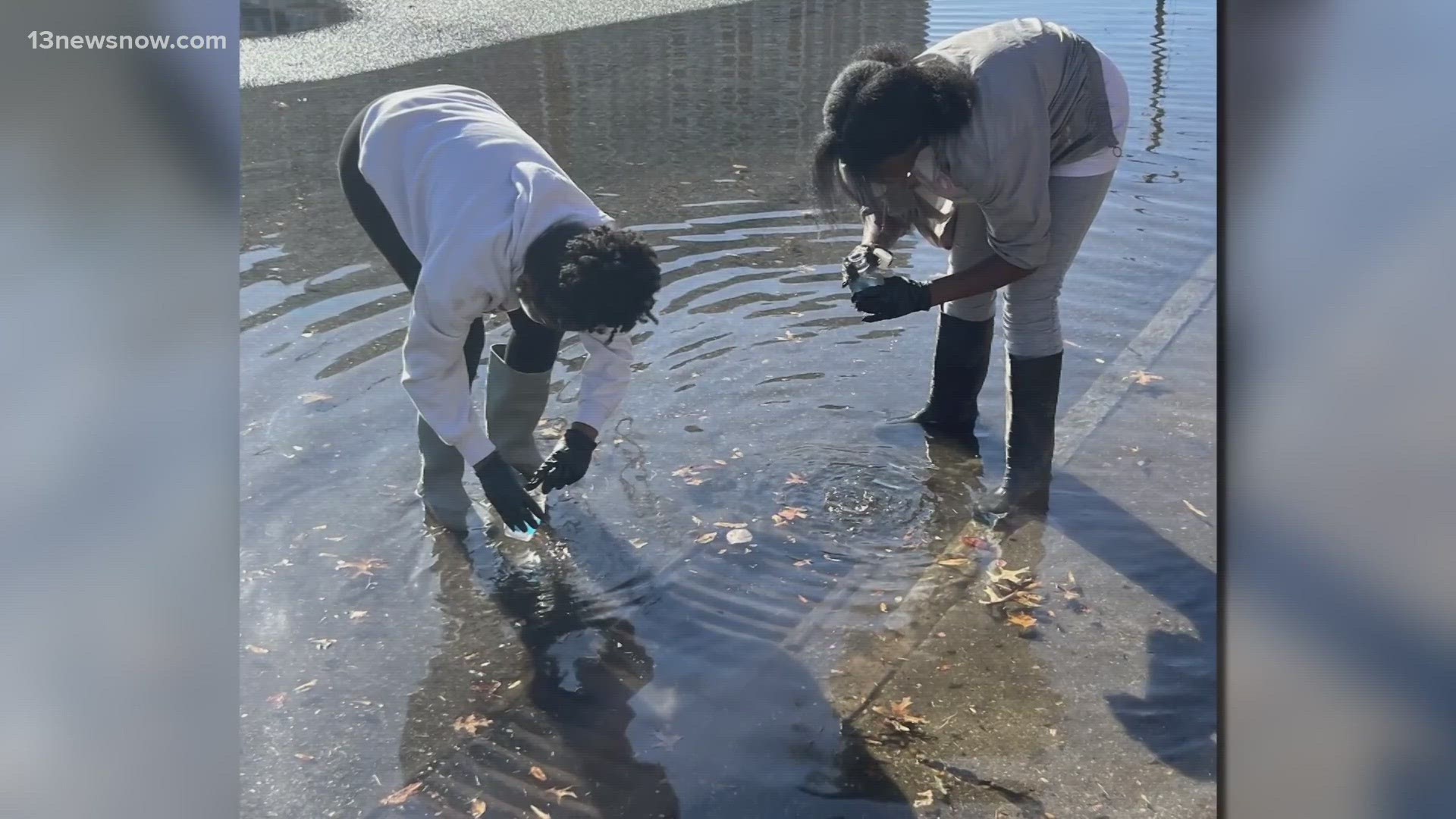NORFOLK, Va. — Water in the streets of Norfolk is not an unusual sight, but a university-led research team took advantage of this week's King Tide.
Groups led by Old Dominion University spread through Norfolk and beyond to measure the tide and collect water samples to keep our waterways healthy for years to come.
"It’s sort of an everything-everywhere-all at once approach to this science," said ODU Professor of Oceanography Margie Mulholland.
14 teams of volunteers from the Elizabeth River Project and Butterfly Village as well as ODU, NSU, and Maury High School students spread out along the eastern branch of the Elizabeth River and alongside the Lafayette River to map flooding and collect water samples Saturday morning.
"Measuring the 'muck' and capturing the King Tide," Mulholland said.
The ODU professor said by using an app created by Wetlands Watch, they can send back data to improve regional flood maps. Collecting those water samples also allows them to measure the nutrient pollution that happens during tidal flooding, as well as measuring the fecal matter that ends up in the water.
"The Bay program has set a nutrient diet for the Chesapeake Bay and none of what goes in during coastal flooding is counting towards that nutrient diet, so we’re sort of cheating on the diet," Mulholland said. "What we’re doing is trying to establish what that load is, how significant it is."
She said during their research in years past, they were able to measure the nitrogen load going into the Lafayette River during other tidal flooding events.
"We were able to establish that the entire load allocation for nitrogen to the Lafayette River could be delivered during a single tidal flooding event. That's significant because it's not being counted towards the models."
According to the U.S. Geological Survey, excess nitrogen can harm bodies of water. It can cause overstimulation of growth of aquatic plants and algae. That in itself can clog water intakes, use up dissolved oxygen as they decompose, and block light to deeper waters.
This project isn’t just about collecting the data for the volunteers.
Katina Barnes, Executive Director of Butterfly Village said she wants the girls in her 'She Can STEM' Academy to walk away with newfound confidence.
"Hopefully they’ll walk away with a different perspective of what a scientist could look like and hopefully see that they could be a scientist," she said.
Gabriella Olivieri, Community Engagement and Environmental Justice Manager with the Elizabeth River Project, said they've created a program called 'Link Up' to foster diversity and inclusion in environmental sciences.
"It's meant to empower youth for equitable solutions and environmental issues. We need diversity for those people in those power-making decisions."
She said this project is a great step forward for that goal.
As for how you can help to keep our waterways healthy and clean during coastal flooding, Mulholland encourages everyone to be mindful of their yard and their trash.
"If people could tend to their landscape and pick it up. Pick up the things on it, so that it’s not running into the water when the tide recedes," she said.
That isn’t the only team taking advantage of coastal flooding this weekend—ODU researchers also took a team to Poquoson for the ‘Blue Line Project.’
The group will mark projected tides for future years using blue, eco-friendly water-based paint, chalk, and flags. This year the group also used drones to document the high tide.

